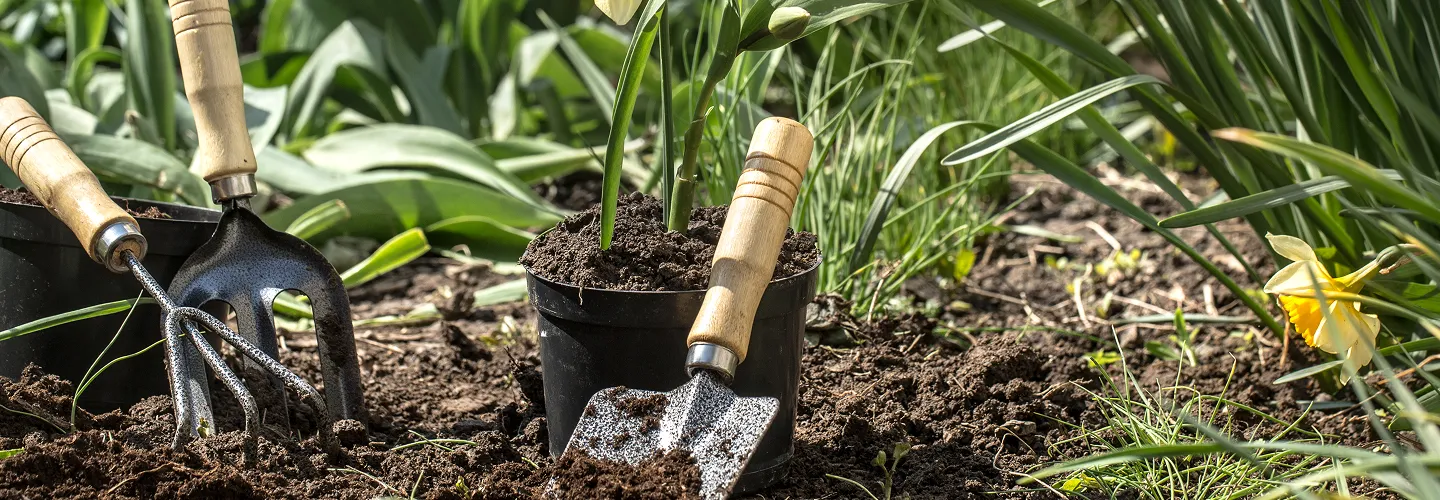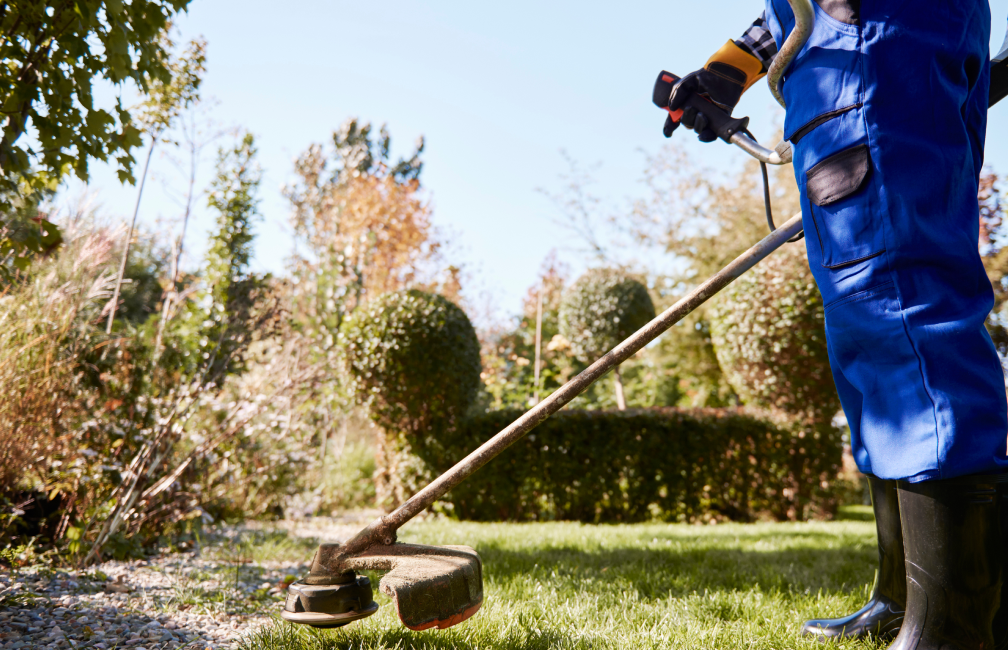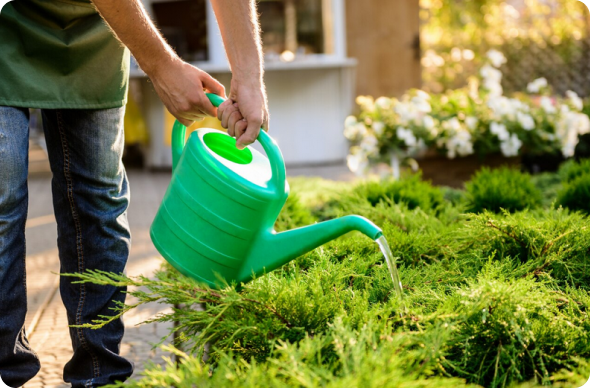
Norton Dethatching Lawn Services
Choose our dethatching lawn service to restore your yard’s health, improve grass growth, and ensure a lush, vibrant landscape all season long.
Get a Free QuoteWhen to Schedule Dethatching Lawn in Norton, MA – Seasonal Guide
In Norton, MA, the best time to schedule lawn dethatching is typically in early spring or early fall, when grass is actively growing and can recover quickly. The local climate, with its cold winters and humid summers, means that dethatching too early or late in the season can stress your lawn. For neighborhoods near Winnecunnet Pond or the wooded areas around Wheaton College, shade coverage and moisture retention can also impact the ideal timing. Monitoring local frost dates and soil temperatures is crucial, as dethatching when the ground is still frozen or overly saturated can damage turf and root systems.
Norton’s landscape features a mix of sandy and loamy soils, which affects how quickly thatch builds up and breaks down. Areas with dense tree coverage, such as those near Barrowsville or Chartley, may require more frequent dethatching due to increased organic debris. It’s also important to consider municipal guidelines and seasonal water restrictions, which can be found on the Town of Norton’s official website, to ensure your lawn care practices are compliant and environmentally responsible.
Local Factors to Consider for Dethatching Lawn in Norton
- Tree density and leaf litter, especially in neighborhoods with mature oaks and maples
- Soil type (sandy vs. loamy) and drainage characteristics
- Proximity to water bodies like Winnecunnet Pond, which can increase humidity and moss growth
- Typical precipitation patterns and risk of drought during summer months
- Municipal restrictions on lawn care and water usage
- Terrain slope and shade coverage, which affect moisture retention and grass recovery
Benefits of Dethatching Lawn in Norton

Improved Lawn Health
Enhanced Water Absorption
Boosted Grass Growth
Reduced Pest Problems
Professional Landscaping Expertise
Reliable Local Service

Norton Dethatching Lawn Types
Cool-Season Grass Dethatching
Warm-Season Grass Dethatching
Residential Lawn Dethatching
Commercial Lawn Dethatching
Sports Field Dethatching
Golf Course Dethatching
Park and Recreation Area Dethatching
Our Dethatching Lawn Process
Lawn Evaluation
Preparation and Marking
Dethatching
Cleanup and Disposal
Post-Dethatching Inspection
Why Choose Norton Landscape Services

Norton Homeowners Trust Us
Expert Lawn Maintenance
Reliable Seasonal Cleanup
Competitive Pricing
Professional Team
Satisfaction Guarantee
Personalized Service
Contact Norton's Department of Public Works for Dethatched Material Disposal & Yard Waste Collection
Norton's rural township character and extensive conservation holdings drive innovative organic debris handling systems that accommodate both countryside estates and residential neighborhoods. The Department of Public Works orchestrates flexible collection schedules and operates accessible facilities specifically designed to process seasonal dethatching volumes while safeguarding the environmental integrity throughout this Hockomock Swamp basin community.
Norton Department of Public Works
70 East Main Street, Norton, MA 02766
Phone: (508) 285-0200
Official Website: Norton Department of Public Works
Exemplary organic material processing demands residents follow refined preparation standards that reflect Norton's environmental stewardship and rural community values:
- Contain lawn debris exclusively in certified biodegradable paper containers; synthetic materials compromise township composting operations and violate state organic waste processing regulations
- Eliminate foreign substances including stones, soil aggregates, construction materials, and woodland debris that interfere with municipal processing machinery
- Respect established weight restrictions and container specifications for both rural collection routes and Transfer Station operations
- Monitor municipal communications for schedule modifications during conservation activities and seasonal weather patterns
- Stage materials to preserve rural road access and prevent storm drainage infrastructure obstruction
Understanding Thatch Buildup in Norton's Hockomock Swamp Basin & Glacial Outwash Terrain
Norton's extraordinary position within the Hockomock Swamp ecosystem creates distinctive growing environments that profoundly influence thatch development across this rural conservation township. USDA Web Soil Survey mapping reveals complex formations including Whitman fine sandy loam dominating swamp transition zones, Carver coarse sand and Plymouth loamy sand across glacial outwash areas, Paxton and Charlton fine sandy loam on upland conservation properties, and Swansea muck deposits along extensive wetland margins throughout this environmentally significant community.
University of Massachusetts Extension Center for Agriculture, Food and the Environment
161 Holdsworth Way, Amherst, MA 01003
Phone: (413) 545-2717
Official Website: University of Massachusetts Extension
Hockomock Swamp ecosystem influences generate extraordinary challenges for residential thatch management throughout Norton's conservation-minded neighborhoods. Seasonal water table fluctuations create alternating saturated and drought conditions that either accelerate organic debris production or inhibit beneficial microbial populations depending on timing and location. Extensive woodland coverage produces naturally acidic soil environments through continuous organic acid release, while conservation management philosophies often favor minimal intervention approaches that influence traditional thatch control methodologies.
When thatch depth surpasses the recommended 0.5-inch benchmark, properties develop interconnected problems including restricted water absorption, limited nutrient access, and heightened susceptibility to seasonal moisture extremes characteristic of swamp basin environments. Township residents should recognize warning signs including bouncy surface texture, water accumulation after light irrigation, inconsistent fertilizer responses, and moss proliferation in shaded zones.
Key practices for managing thatch in Norton's conditions include:
- Synchronizing operations with Hockomock Swamp seasonal cycles when groundwater conditions facilitate rapid recovery without wetland disruption
- Incorporating soil amendments neutralizing acidic conditions from extensive forest influence and swamp ecosystem proximity
- Choosing grass cultivars adapted to conservation landscape objectives and fluctuating moisture patterns from basin influences
- Employing ecological nutrition strategies preventing excessive growth while supporting native habitat integration
- Installing immediate ground coverage following dethatching using indigenous varieties suited to Norton's diverse conservation terrain
Reference: USDA Web Soil Survey
Norton Conservation Commission Requirements for Dethatching Near Wetlands & Protected Areas
Norton's vast Hockomock Swamp system and conservation network necessitate comprehensive environmental coordination for lawn maintenance throughout this preservation-focused township. The Massachusetts Wetlands Protection Act establishes protective buffer zones extending 100 feet from wetland boundaries and 200 feet from waterways, encompassing the extensive Hockomock Swamp complex, Norton Reservoir watershed, Canoe River tributaries, and numerous conservation easement systems that define much of the township's ecological infrastructure.
Norton Conservation Commission
70 East Main Street, Norton, MA 02766
Phone: (508) 285-0200
Official Website: Norton Conservation Commission
Wildlife habitat protection assumes critical importance during April through July breeding seasons when diverse species utilize Hockomock Swamp margins, conservation corridors, and rural woodland edges throughout Norton's developed landscape. Properties bordering Norton Reservoir conservation areas, Hockomock Swamp Wildlife Management Area, or extensive private conservation easements must employ rigorous erosion control preventing sediment migration into sensitive aquatic environments supporting both ecological research and habitat preservation.
Substantial dethatching operations within regulated buffer zones typically necessitate environmental review through Notice of Intent or Request for Determination of Applicability procedures. Conservation-compatible manual techniques and specialized minimal-impact equipment are strongly recommended near swamp systems and conservation boundaries to minimize soil disturbance while protecting ecological functions essential to Norton's conservation leadership mission.
Norton's Implementation of Massachusetts Organic Waste Regulations for Dethatched Material
State mandates under Massachusetts General Law Chapter 111, Section 150A require organic waste diversion from household refuse systems, generating opportunities for innovative rural conservation community composting programs that capitalize on Norton's environmental stewardship expertise and extensive land resources. The township has orchestrated comprehensive organic material processing options that integrate seamlessly with conservation practices while ensuring environmental compliance throughout this Hockomock Swamp ecosystem municipality.
Massachusetts Department of Environmental Protection
One Winter Street, Boston, MA 02108
Phone: (617) 292-5500
Official Website: Massachusetts Department of Environmental Protection
Massachusetts Department of Agricultural Resources
251 Causeway Street, Suite 500, Boston, MA 02114
Phone: (617) 626-1700
Official Website: Massachusetts Department of Agricultural Resources
Rural conservation composting initiatives provide excellent organic waste processing opportunities where property characteristics support appropriate site selection within Norton's preserved landscape settings. Residential composting operations benefit from generous rural lot dimensions while requiring adequate setbacks from Hockomock Swamp systems, Norton Reservoir watershed, and conservation easement margins throughout this environmental stewardship community.
Municipal collection services accommodate conservation community access patterns through flexible scheduling recognizing wildlife protection activities while maintaining Massachusetts General Law Chapter 111, Section 150A compliance. Technical guidance from the Massachusetts Department of Agricultural Resources supports sustainable practices complementing Norton's conservation leadership and ecosystem protection objectives.
Post-Dethatching Stormwater Management in Compliance with Norton's MS4 Program
Norton's Municipal Separate Storm Sewer System obligations emphasize comprehensive Hockomock Swamp watershed protection throughout the township's conservation and rural drainage network. National Pollutant Discharge Elimination System standards mandate rigorous pollution prevention during soil-disturbing activities, with enhanced requirements for areas contributing to the Taunton River basin through Hockomock Swamp systems and Norton Reservoir watershed protection.
U.S. Environmental Protection Agency, Region 1
5 Post Office Square, Suite 100, Boston, MA 02109
Phone: (617) 918-1111
Official Website: U.S. Environmental Protection Agency, Region 1
Conservation community weather monitoring requires sophisticated attention to storm development affecting Hockomock Swamp systems and wildlife habitats. Property owners should consult National Weather Service Boston forecasts and suspend operations when precipitation threatens within 24 hours. Post-dethatching stabilization requirements include:
- Immediate establishment of protective ground coverage within 24 hours using native-adapted seed varieties suited to Hockomock Swamp basin conditions and conservation landscape integration
- Strategic nutrient management preventing excess applications that would compromise pristine swamp water quality and conservation area ecosystem integrity
- Precision irrigation supporting establishment while preventing runoff into Norton's conservation watershed protection infrastructure
- Coordinated soil enhancement addressing minimal disturbance while maintaining conservation objectives and swamp ecosystem health
- Installation of temporary erosion barriers reflecting conservation principles on slopes near Hockomock Swamp margins and Norton Reservoir boundaries
These comprehensive measures ensure Clean Water Act and EPA NPDES compliance while supporting turf recovery in Norton's challenging conservation environment.
What Neighborhoods Do We Serve Throughout Norton, MA?
Norton's rural districts and conservation areas present diverse thatch management challenges influenced by Hockomock Swamp proximity, conservation interface conditions, and rural development patterns throughout this Bristol County environmental stewardship community.
Norton Center Rural Village encompasses traditional civic areas with mature landscapes and potentially modified soils from rural community development. Proximity to municipal facilities and Norton Reservoir creates distinctive microclimate conditions while conservation requirements often necessitate specialized maintenance approaches for sensitive area protection throughout this rural community center.
Hockomock Swamp Conservation Interface includes properties with direct swamp system access experiencing unique growing conditions from extensive wetland proximity and seasonal water level fluctuations. Enhanced humidity from swamp influence affects decomposition while strict ecosystem protection requirements demand exceptional care during maintenance activities throughout this critical ecological zone.
Norton Reservoir Watershed District encompasses properties surrounding this significant water supply with distinctive growing conditions from reservoir proximity and enhanced environmental oversight. Seasonal water table fluctuations and drinking water protection requirements necessitate careful nutrient management and erosion prevention during maintenance operations throughout this water resource protection area.
Canoe River Rural Corridor features scattered development along tributary systems with varied soil types and conservation characteristics. Properties experience seasonal moisture variations while serving as critical habitat corridors connecting rural development with regional Hockomock Swamp conservation networks throughout this aquatic ecosystem.
Wheaton College Conservation Campus Interface includes properties adjacent to institutional conservation lands with challenging growing conditions from academic research activities and preserved natural area management. Enhanced environmental oversight and research considerations influence maintenance timing while educational facility coordination becomes necessary throughout this academic conservation zone.
Lake Winnecunnet Recreation District encompasses properties near this popular water resource with distinctive conditions from lake proximity and recreational activities. Enhanced humidity levels and seasonal water variations affect microbial activity while lake watershed protection requirements necessitate careful management throughout this recreation destination.
East Norton Pine Barrens Transition features properties near extensive woodland areas with heavily acidic soil conditions from continuous organic acid production. Deep forest shade favors moss development over healthy turf establishment while Pine Barrens ecology creates naturally challenging growing conditions requiring specialized soil management approaches throughout this ecological interface zone.
Norton Municipal Bylaws for Landscaping Operations & Equipment Use
Municipal ordinances governing landscaping operations in Norton establish comprehensive standards reflecting the township's conservation leadership and Hockomock Swamp stewardship while ensuring protection for extensive conservation holdings and rural ecosystem preservation. These regulations establish operational standards appropriate for rural conservation communities supporting both environmental preservation and sustainable landscape management objectives.
Norton Building Department
70 East Main Street, Norton, MA 02766
Phone: (508) 285-0200
Official Website: Norton Building Department
Norton Board of Health
70 East Main Street, Norton, MA 02766
Phone: (508) 285-0200
Official Website: Norton Board of Health
Conservation community considerations establish operational schedules accommodating wildlife protection activities and Hockomock Swamp management while maintaining rural neighborhood tranquility. Commercial service providers must maintain comprehensive insurance reflecting conservation property values while demonstrating environmental compliance capabilities honoring Norton's conservation leadership throughout swamp ecosystem and watershed protection areas.
Equipment operation standards address unique conservation community challenges including navigation of rural conservation roads, protection of underground utilities serving preserved properties, and coordination with Hockomock Swamp management activities. Service providers must demonstrate competency in conservation ecosystem management while maintaining effective thatch removal capabilities in diverse substrates affected by swamp influences and environmental protection requirements.
Substantial dethatching projects near Hockomock Swamp systems, conservation areas, or Norton Reservoir vicinity typically require coordination with multiple agencies ensuring compliance with rural conservation environmental protection standards. Professional operators must maintain current training in conservation stewardship practices while ensuring successful turf establishment in Norton's complex swamp ecosystem environment with its integrated conservation requirements and comprehensive Hockomock Swamp protection standards.